Beeston England
6 Rosetrees Road
William Gidley Emmett
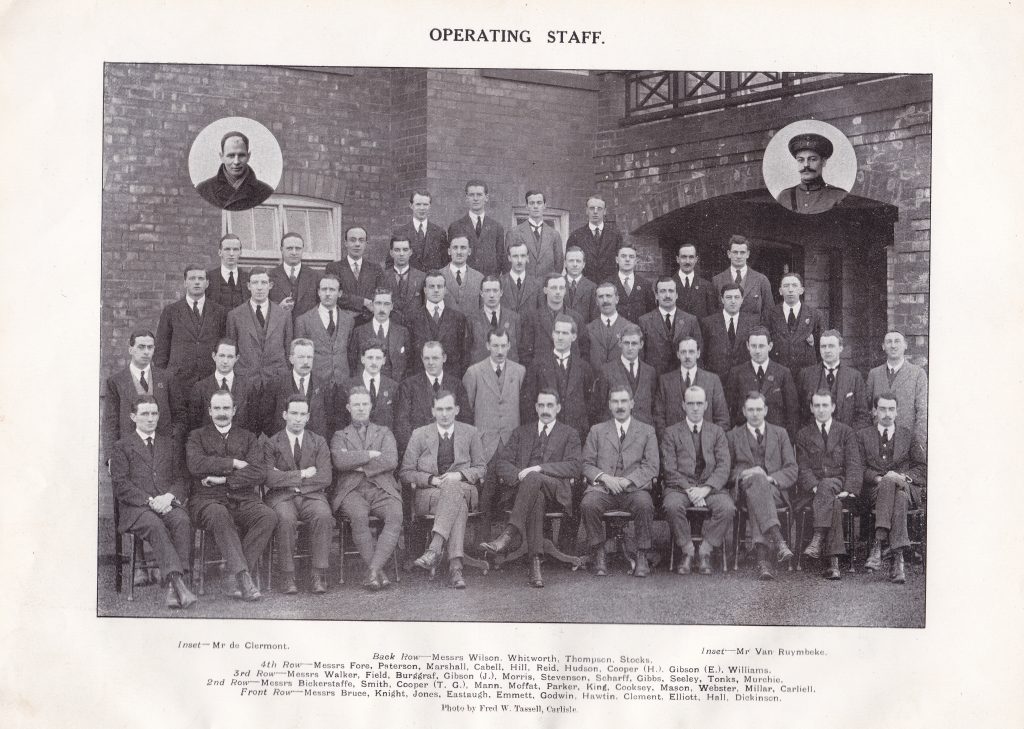
Emmett pictured as part of the operating staff at HM Factory Gretna. Photo taken from the Mossband Farewell, from the archive collection at The Devil’s Porridge Museum
William Gidley Emmett was the manager of the Cordite Section at Mossband from early 1916 onwards. His background had been in explosives, having already worked in Japan. Following the Great War, he had a successful career travelling the world in the oil refining industry. He later changed careers and became an educationalist, studying the statistical efficacy of examinations at Edinburgh University.
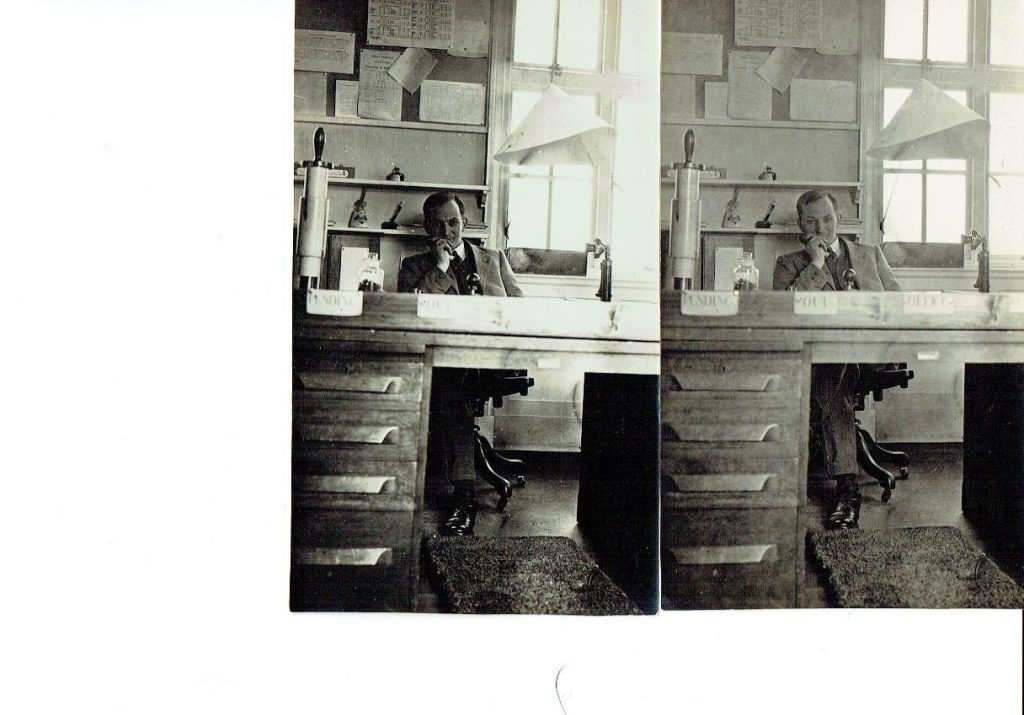
Emmett pictured in his office at HM Factory Gretna, 1918. Photo kindly shared by Emmett’s relatives.
He was born in Beeston, near Nottingham, on 21 August 1887, the son of William Gidley Emmett, a lace curtain manufacturer, and Annie Marie Emmett. He was educated at Nottingham High School and won a scholarship to study Natural Sciences at Gonville and Caius College, Cambridge in 1905, graduating with an MA in 1908. He specialised in explosives.
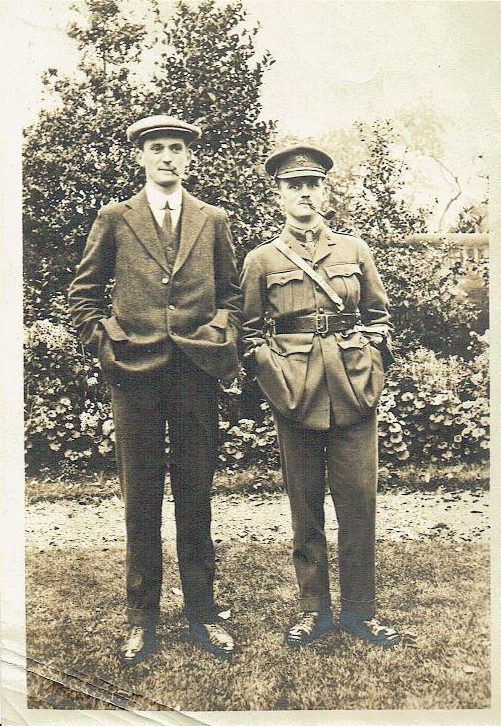
The Emmett brothers, William and Reginald. Photo kindly shared with us by family.
His first job was as an Analytical Research Chemist at Chilworth Gunpowder Co. in Surrey, then in 1912 he moved to the Japanese Explosives Co. in Hiratsuka, Japan. He returned to Britain following the outbreak of the First World War. He was appointed as Assistant Manager of the guncotton section at the HM Factory Queens Ferry in Flintshire, South Wales. In early 1916 he then became Section Manager of the Cordite Section at the Mossband site at HM Factory, Gretna.
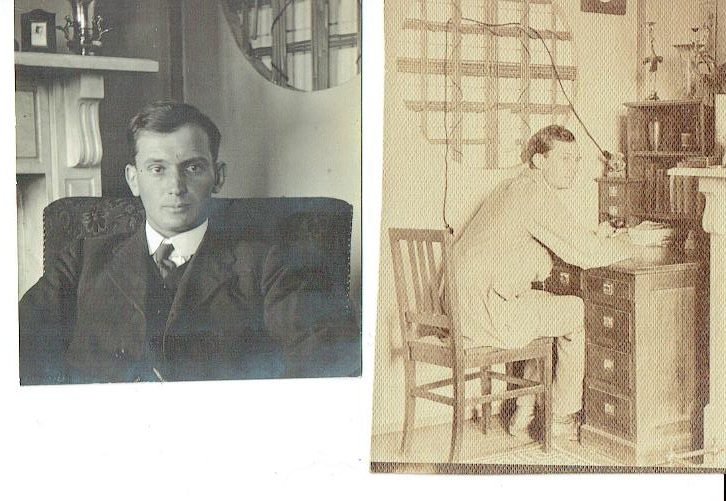
Pictures of W. G. Emmett, kindly shared with us by relatives.
William wrote about his time at Gretna in an unpublished memoir. He describes how production was built up slowly with an initial workforce of 100 women. Production was ramped-up to eventually employ 6,000 workers, nearly all women, working three shifts. On one occasion the plant had a visit from King George V and Queen Mary, the latter apparently remarking that William seemed very young. On days off he would ride his motorbike, a one-cylinder Triumph, with several other staff to the Lake District and go walking or go to Powfoot on the Solway Firth to play golf. On Saturday nights he would ride into Carlisle for a slap-up dinner and a variety show. He contributed to the Mossband Farewell, praising the hard work, dedication and comradeship of all the workers who contributed to the war effort at HM Gretna.
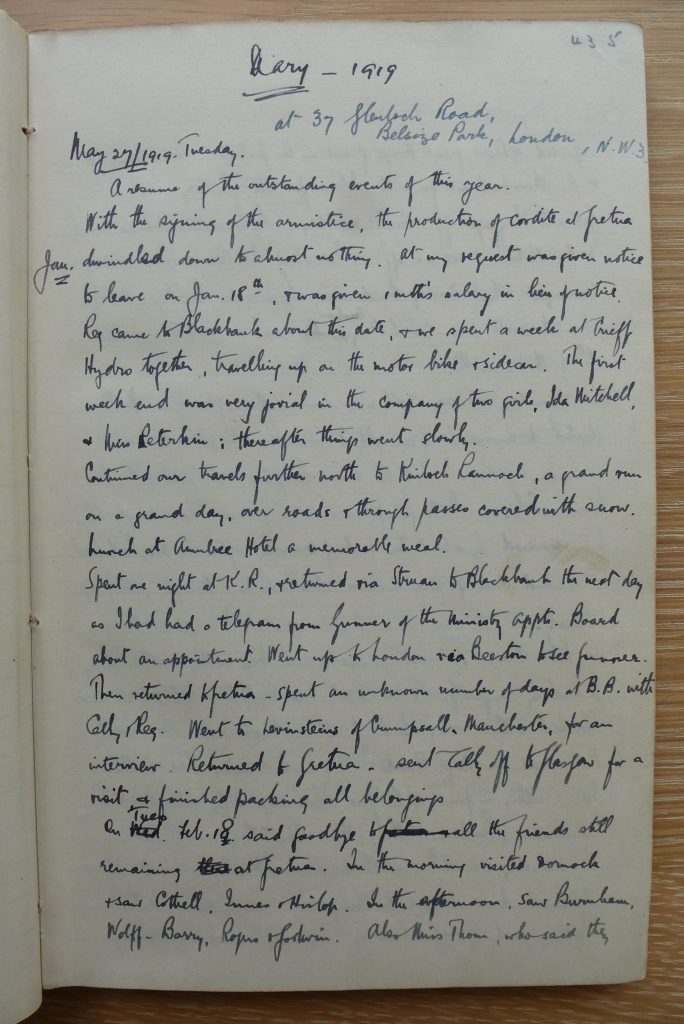
Emmett’s diary upon leaving Gretna. Kindly shared with The Devil’s Porridge Museum by Emmett’s relatives.
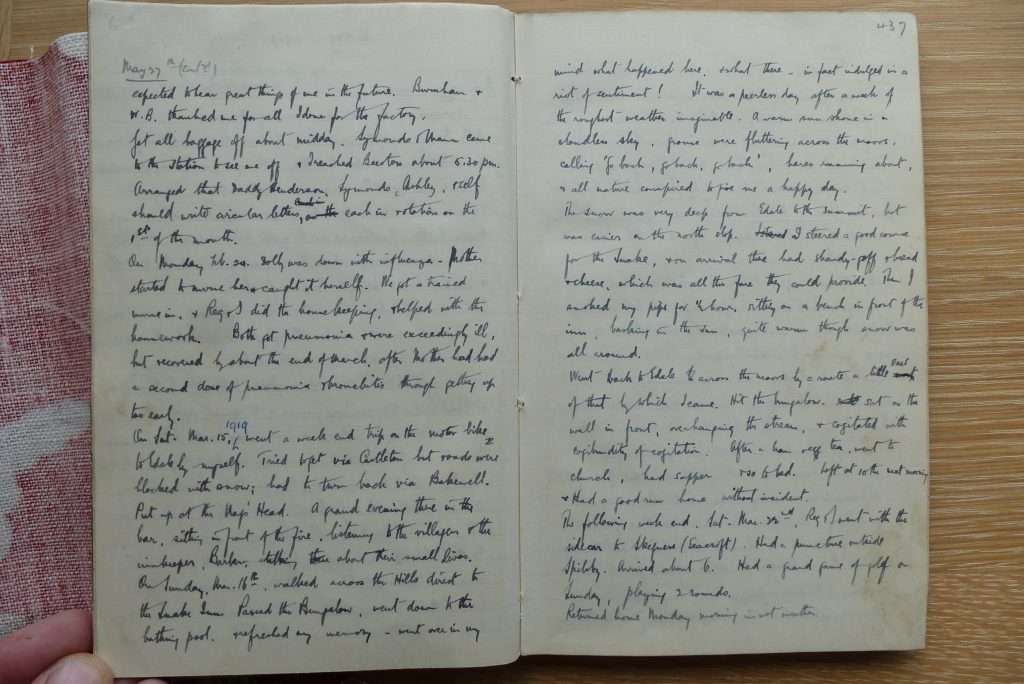
At the end of the war, in 1919 he went to work for Royal Dutch Shell Oil Company, visiting oil refineries in Dutch Borneo, Java and Sumatra studying processes. In 1920 he was appointed as manager of the Anglo-Egyptian Oilfields refinery in Suez, and in 1922 was manager of the Sarawak Oilfields refinery at Miri in Sarawak. In 1923 he visited the USA and studied processes at oil refineries in St Louis, San Francisco, Los Angeles and New Orleans. A year later in 1924 he was appointed manager of the refinery section at the Royal Dutch Petroleum in Curacao.
Health concerns forced him to return to Britain in 1925, where he became a researcher in chemistry at Birmingham University. There he met an old colleague, C W Valentine, who was conducting research on the reliability and predictive power of examinations. In 1931, William embarked on a new career as an educationalist by studying the statistical methods applicable to assessing the efficacy of exams. This brought him to the attention of Godfrey Hilton Thomson at the University of Edinburgh, and in 1935, William joined the Moray House College of Education there. He took part in the construction and standardisation of the Moray House Tests, which were used throughout the UK for school selection.
During the Second World War he was Managing Chemist, Guncotton, TNT and Tetryl sections at HM Factory Bishopton. In 1942 he became Managing Chemist, Cordite Section at HM Factory Wrexham.
After the War he returned to Edinburgh to become a Lecturer and Reader in Experimental Education, publishing widely. Between 1948 and 1952 he gave lectures at Homerton College in Cambridge to staff of Local Education Authorities, promoted by the Ministry of Education. In December 1952 he undertook a lecture tour in Columbo, Kandy and Jaffna in Ceylon (modern day Sri Lanka) under the auspices of the British Council. He retired in 1953. Emmett describes this as being dismissed from his university appointment by Professor J G Pilley.
In 1954, following his retirement, he was elected a Fellow of the Royal Society of Edinburgh. His proposers were Sir Godfrey H Thomson, Alexander Aitken, Ivor Malcolm Haddon Etherington and Derrick Lawley. Between 1955 and 1957 he was on the staff at Ferranti Ltd at Crewe Toll, Edinburgh, as a technical writer.
In 1955, aged 68, he married Margarete Annelisa Hartmann (born 20/12/1908) in Dusseldorf. They lived at Redford Crescent in Edinburgh. They had no children. In February 1958 they visited Australia.
William died on 5 January 1985, aged 97.
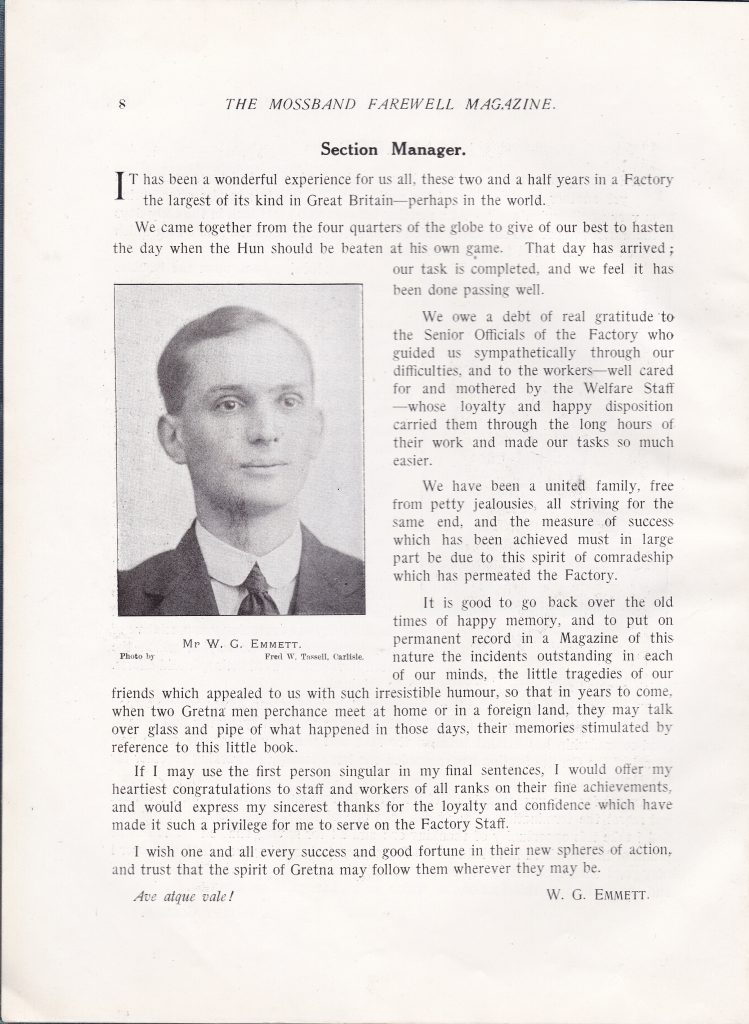
Emmett’s photo and article from the Mossband Farewell, part of the archive collection at The Devil’s Porridge Museum
Beeston England
6 Rosetrees Road
